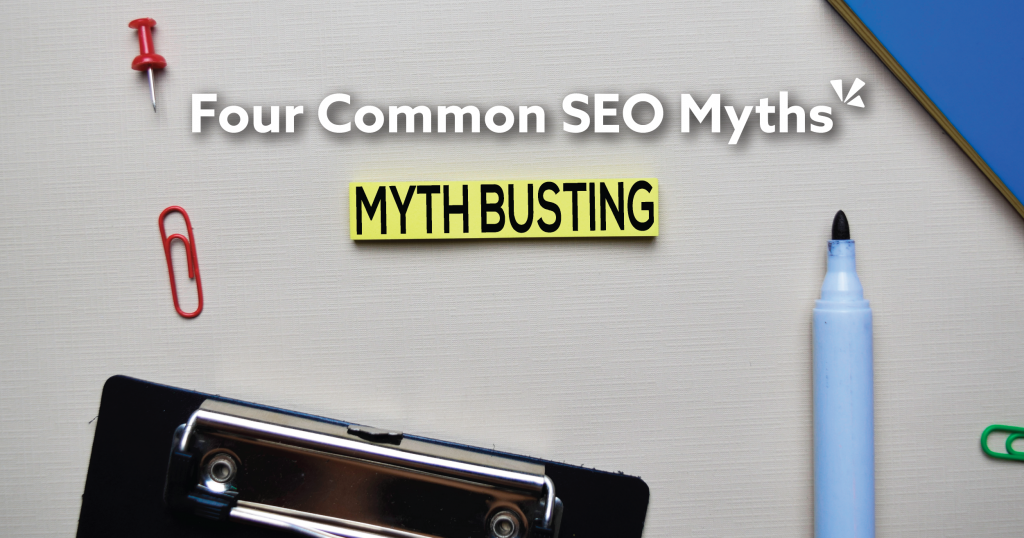Four Common SEO Myths

Search Engine Optimization (SEO) is shrouded in myths, mystery, and outdated methods. It can be difficult to keep up with the latest practices when Google releases updates to the algorithm constantly. As you work on SEO, the most important thing to keep in mind is your customer. Does your website give them an experience that is simple, easy to follow, and answers their questions? If so, you’re on the right track.
Myth #1: After applying SEO, my website will rank #1 instantly.
Unfortunately, SEO is not a miracle. The internet is full of competition and getting into the #1 spot for your key words and phrases may take time and effort. If a marketing company guarantees they can help you rank #1 or a certain number of website visits, you should be wary. Although reputable companies may give an estimate or a goal of visitors or ranking, it’s impossible to promise either.
Best Practices:
Apply SEO following Google’s guidelines and use analytics to track your progress or find a reputable marketing firm to help you. Climbing the ranks will take time along with some trial and error.
Read our article on landing the top spot here.
Myth #2: Adding a bunch of keywords will help your ranking.
In the early days of SEO, it was common to “keyword stuff” by adding as many related (or sometimes unrelated) keywords into the back end of a website. Similarly, sometimes words were added in a font that matched the background to trick search engines. At the time, it worked. Algorithms have come a long way since then, and this type of practice is now considered “black hat” SEO. Because search engines want to give useful information to searchers, they’ve become smart enough to know when websites are taking shortcuts and trying to cheat the system. Now, your website can rank lower if you use “black hat” practices.
Best Practices:
Instead of taking shortcuts, we recommend looking into current practices that focus on improving your user experience and writing content that will be useful to your target market.
Read our article with tips to improve your ranking here.
Myth #3: SEO and my website are one and done projects.
Creating a website and then leaving it alone is a detrimental mistake. If you have a blog and the most recent article is from three years ago, visitors will question if the rest of the information on the website is accurate. You may not rank as well, because search engines can tell if there’s been recent updates, and search engines want to provide up to date information to their searchers.
Best Practices:
Make it a habit to update your website frequently. Add new photos, update any information as needed, or start a blog and post regularly. Also ensure your website software stays up to date and secure. A huge part of SEO is valuable content, so make sure your website answers any questions your potential clients may have.
Read our article on taking care of your websites here.
Myth #4: The security of my site only matters if I’m taking payments.
Whether you take sensitive information or not, many website visitors will leave or be hesitant to reach out to a company when they see a website isn’t secure. Allowing your website to become outdated or unsecure also poses a threat to your website’s wellbeing making it susceptible to hackers. Search engines avoid showing hacked sites in results, as it can be dangerous to visitors. Once again, this shows that typically what is best for your user experience is also beneficial to your SEO.
Best Practices:
Make sure your URL has “https” in front of it, which verifies that the SSL certificate is up to date. If it shows “http” without the “s”, reach out to your website provider to see if they can help. Also make sure to keep your website software current.
It can be hard to keep track of the constant updates being released by search engines, but it’s important to understand SEO best practices for the success of your website, and company. Reach out to Pinnacle Marketing Group to speak with someone who has experience with SEO and can help you work towards your goals.
